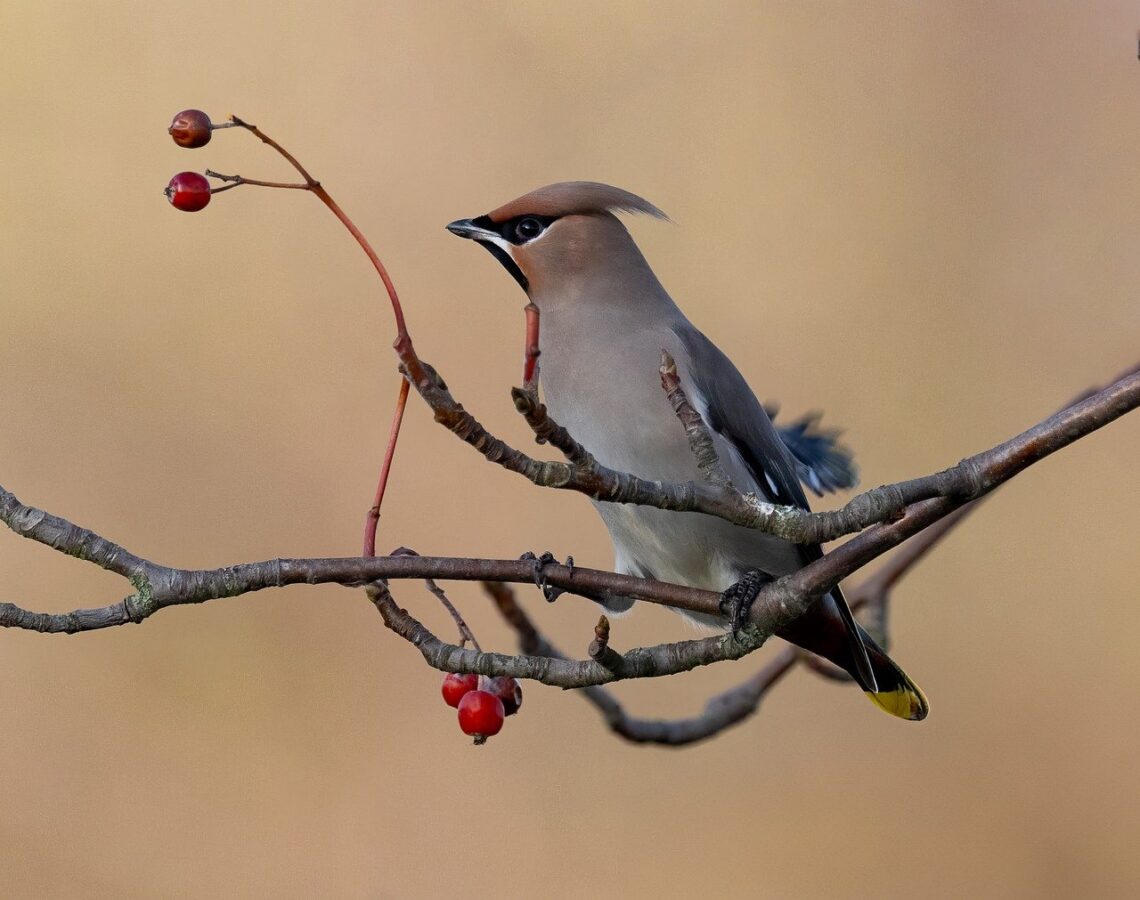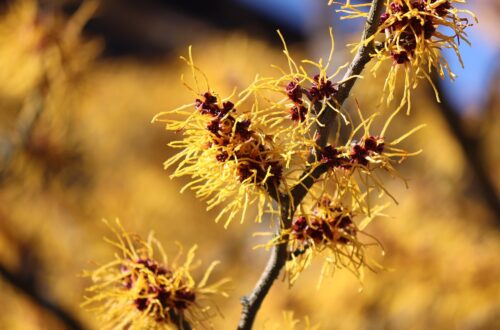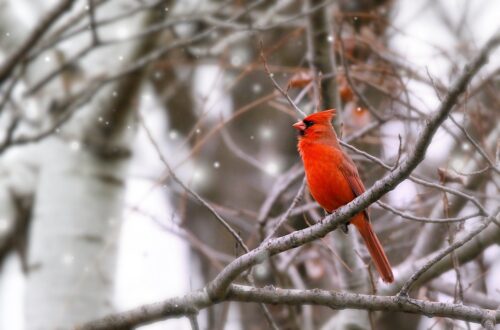Learn how to attract waxwings to your yard with native plants and these easy wildlife gardening tips!
Waxwings are social birds that are well-known for their fruit eating habits and their brightly colored feathers. Native to North America, waxwing birds are always a treat to see and they’re especially handy in gardens where they feed on pest insects; however, waxwings tend to be more hesitant about visiting backyard feeders than finches and hummingbirds. If you’d like to entice a Bohemian or cedar waxwing flock to visit your garden, you’ll learn everything you need to create a waxwing habitat right here!
Affiliate disclosure: As an Amazon Associate, I may earn commissions from qualifying purchases.
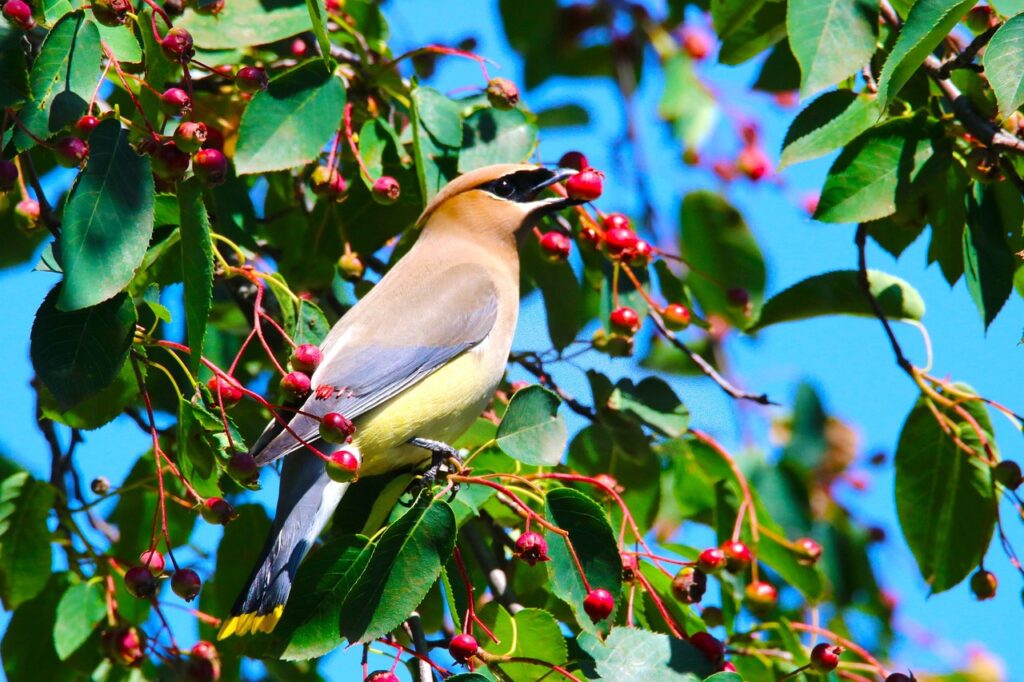
Where Do Waxwings Live?
There are only three species of waxwings in the world: Japanese waxwings (which are only found in Asia), Bohemian waxwings and cedar waxwings. Cedar waxwings and Bohemian waxwings can be spotted throughout North America, although the bohemian waxwing range is much more limited than the cedar waxwing range. For the most part, Bohemian waxwings are most common along the Canadian border and in the Northwest, while cedar waxwings are year-round resident birds in the northern half of the United States and winter residents in the southern states and Central America.
Unlike many backyard birds, waxwings are quite nomadic and they can be hard for even seasoned birders to track down. These fruit-eating birds frequent areas where fruit and berry-producing plants are prevalent and they may be sighted in orchards. However, most of the time, you’ll just see a flock of cedar waxwings passing through… so you’ll want to have your binoculars ready!
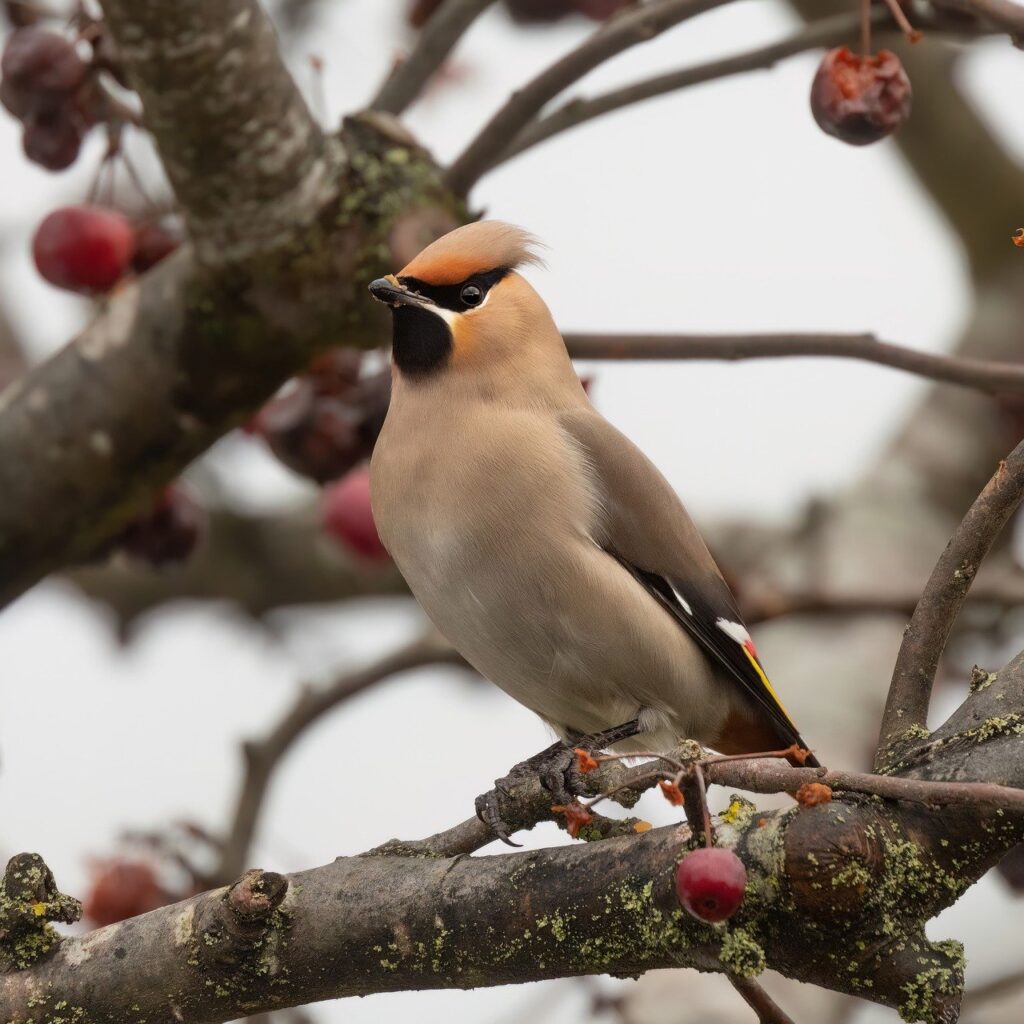
How to Make a Waxwing Habitat Garden
Waxwings mostly eat fruit and berries, but they are technically omnivorous birds that will eat insects too. Compared to crows and many other birds, waxwings can be harder to attract and they’re not likely to take up permanent residence in your garden. However, with the right balance of food, water and shelter, you can make your garden enticing to these feathered nomads and invite waxwings to drop in whenever they fly by!
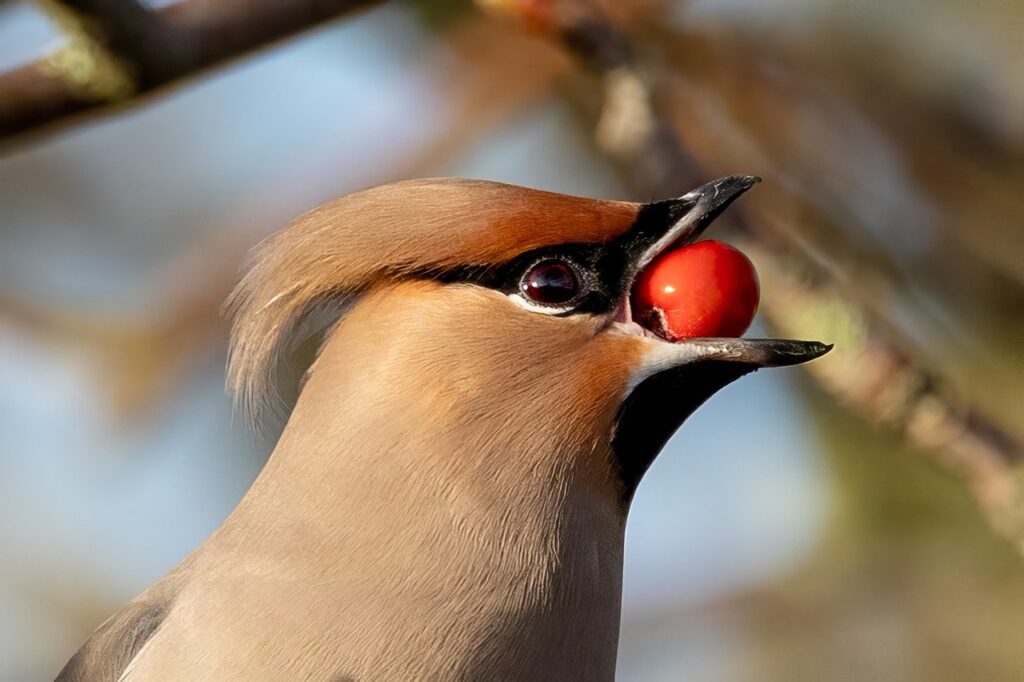
Grow berry producing plants.
The single best way to attract waxwings is to grow berry-producing trees and shrubs. Waxwings LOVE eating berries and, if you’ve ever had a waxwing flock stop by your garden, you know they will happily gobble up all the berries in sight in the space of an afternoon! Growing plants that produce berries and fruit at different times of the year can increase the chances that waxwings will visit your yard throughout the seasons.
Native plants are always the best plants to grow for attracting wildlife, but what plants are native to your garden will vary depending on where you live. Holly bushes are favored by waxwings, but some other excellent fruit-bearing plants to grow include:
- Elderberries
- Blackberries
- Blueberries
- Raspberries
- Wild strawberries
- Serviceberries
- Cotoneaster
- Chokecherries
- Wild grapes
- Hawthorn
- Hackberries
- Juniper
- Mulberries
- Mountain ash
- Viburnum
- Crabapples
- Dogwood
- Winterberries
Tip: Waxwings typically eat fruit and berries whole, so look for plants that yield small berries!
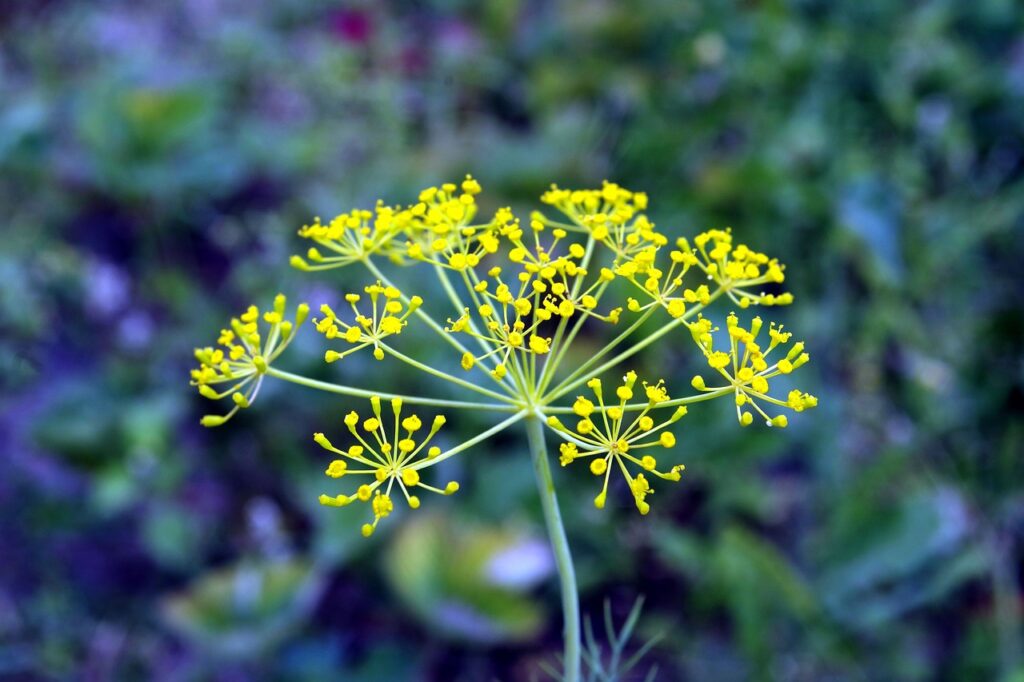
Add other flowering plants.
Although waxwings spend most of their time eating fruit and berries, they also eat insects. Growing insect-attracting plants like yarrow, coneflowers, black eyed Susan, bee balm and plants in the carrot family (dill, parsley, and fennel, for instance), can make your garden more enticing to waxwings and other birds too. If you happen to keep a vegetable garden, you’ll appreciate all the pest-eating help you can get and waxwings are always happy to oblige!
Hint: Waxwings will chow down on a variety of garden pests, but they’re particularly fond of caterpillars, cicadas, scale, ants, beetles and sawflies!
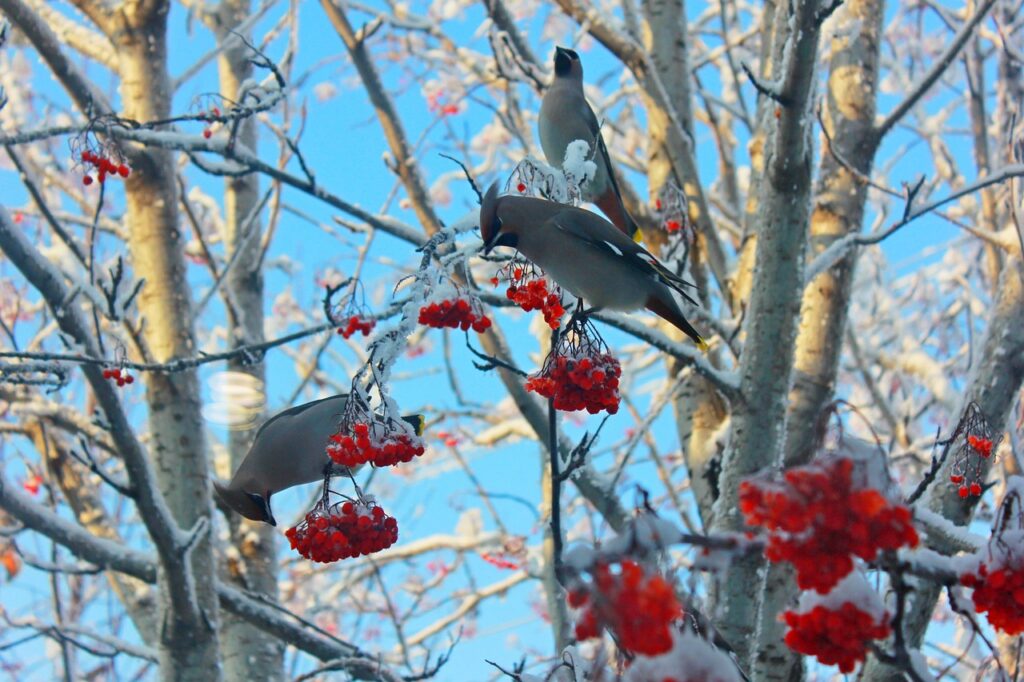
Hang up a feeder.
Waxwings can be reluctant to visit backyard bird feeders and they’re more likely to drop into gardens with berry-producing shrubs. However, waxwings will occasionally stop by tray or platform feeders if they’re filled with the right cedar waxing bird food. Seed blends that contain dried fruit, like currants and raisins, are appropriate, but you can also place out an old pie tin filled with chopped grapes and apples or hang up garlands of cranberries to lure waxwings in.
Tip: If you’re using fresh fruit, be sure to replace it daily and rinse out your feeding dish. Spoiled fruit isn’t good for humans and it’s not good for waxwings either!

Install a water feature.
Waxwings may not be all that interested in bird feeders, but they do love a good bird bath! Wide and sturdy bird baths will accommodate several waxwings at once, but baths don’t need to be very deep – just 2 to 3” deep should do. Position bird baths in a sunny spot and clean them out regularly to make them irresistible to waxwing flocks.
Tip: Adding a solar-powered bubbler can make water features more attractive to birds (and less attractive to mosquitoes!)
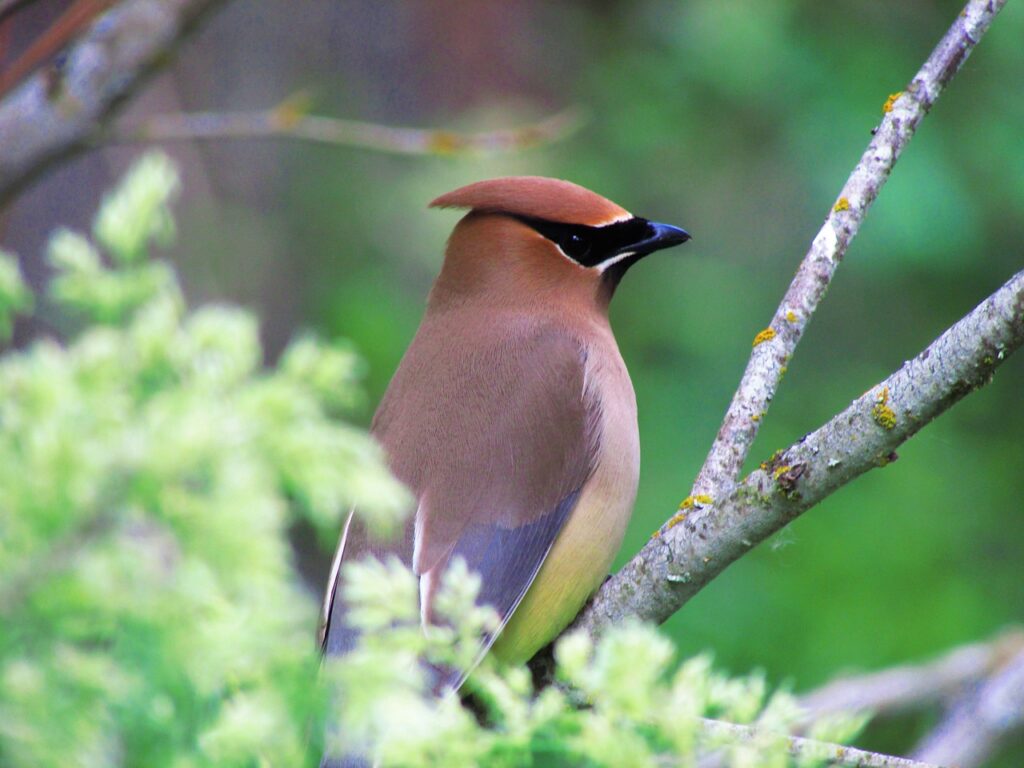
Keep sheltering trees.
Some birds will frequent birdhouses and roosting boxes, but waxwings aren’t that keen on sleeping in premade houses. Instead, waxwings will often nest in the crooks of tree branches and other shrubby or evergreen plants. Adding native shrubs and trees to your garden will provide natural nesting spots for waxwings and save you the trouble of building a bird house.
While waxwings will nest in a variety of different trees, if you’re planning to plant new trees in your garden, you may want to add the following trees for waxwings:
- Cedars and native evergreens
- Maples
- Apples
- Dogwoods
Tip: For an extra boost, try growing plants that waxwings and other birds can use to build nests – like ornamental grasses, dandelion fluff and milkweed fluff. You can also place out suet cages filled with nesting materials, like clean fur and feathers.
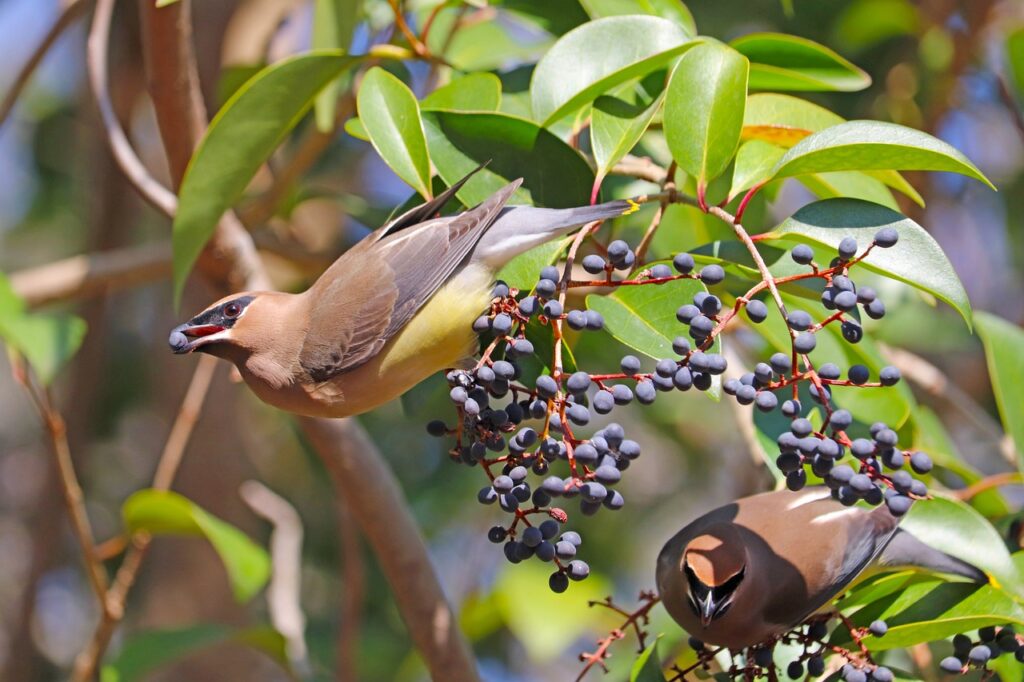
Go organic.
Of course, if your goal is to attract wildlife, it’s always best to keep your garden and lawn as organic as possible… and that means avoiding herbicides, pesticides and synthetic fertilizers whenever possible. Waxwings and other birds feed on insects, but if pesticides are used in your garden, insect prey will be scarce and birds may accidentally ingest pesticides if they do happen to find a bug to nibble on.
Luckily, there are lots of ways to go organic in your garden. Crop rotation, companion planting and a good autumn garden cleanup can keep pests in check, and floating row covers and fruit protection bags are handy too. If you do need to use spray products, organic insecticidal soap sprays have less of an impact on pollinators (but don’t spray them on flowers) and pesky weeds can be controlled with hand-pulling, weed barrier cloths and horticultural vinegar sprays.
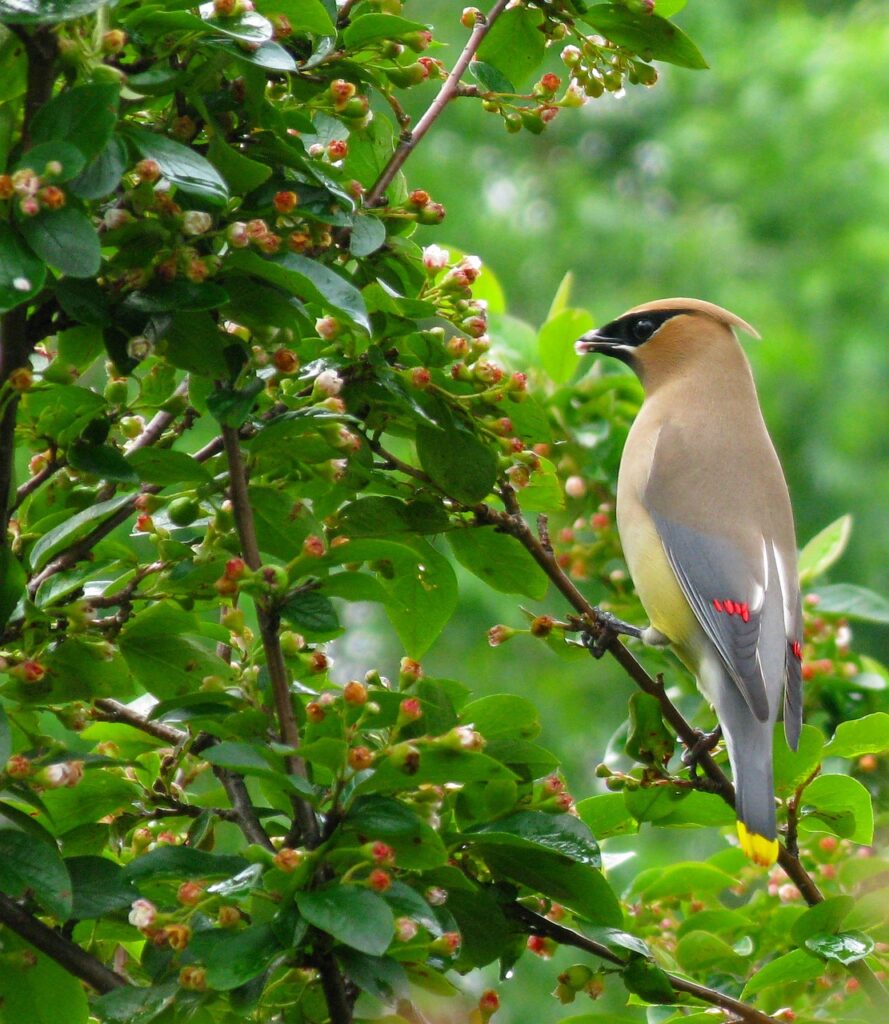
Why Are Waxwings Called Waxwings?
When you first look at waxwings, you’ll probably notice the black bandit’s mask over their eyes and the pointed crest of feathers on their heads. But what you probably won’t notice is the bright patch of red on the tips of their wings!
It took me years to see the red on waxwings’ wings, but that little splash of color is actually how waxwings got their name. This bright coloration is said to look like red candle wax dripping from their wings, although the red color is actually derived from the red pigment in the berries waxwings consume. Waxwings develop more red “wax” spots as they age and young waxwings may not have any red coloration at all.
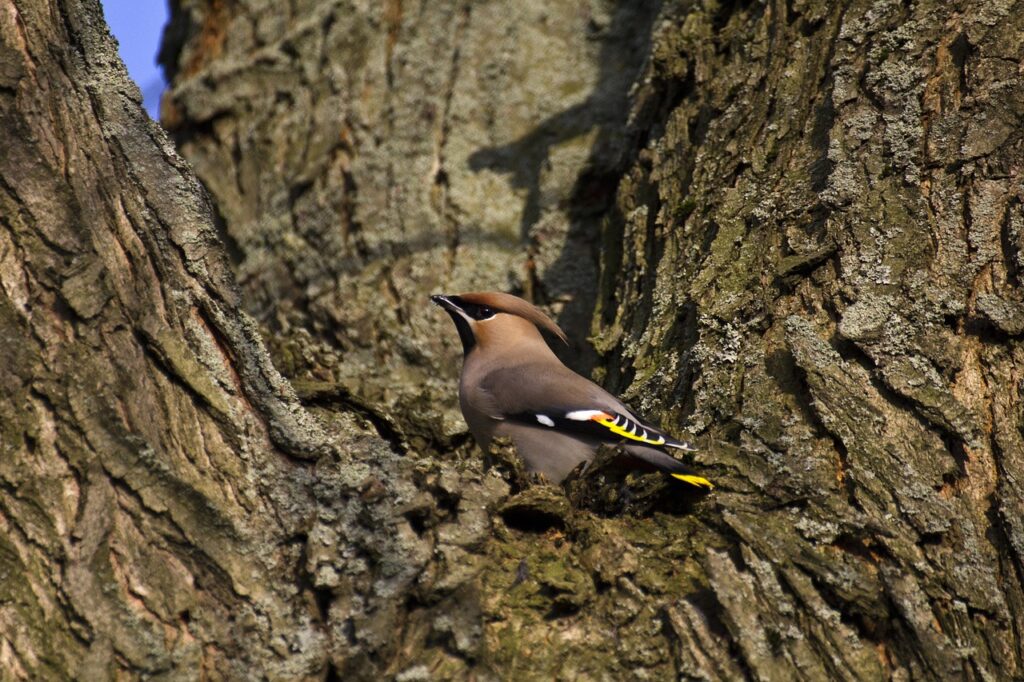
Bohemian Waxwings vs. Cedar Waxwings: What’s the Difference?
Bohemian waxwings and cedar waxwings look very similar and it can be hard to tell them apart. But there are a few key ways to differentiate these two backyard birds:
- Cedar waxwings have a wider range and they are more common in many areas.
- Cedar waxwings have white at the base of their tails, while Bohemian waxwings have a brownish-red color.
- Bohemian waxwings have more gray feathers, and a tinge of reddish-brown feathers on their face.
- Bohemian waxwings have more patterned, yellow and white feathers on their wings.

A Note on Protecting Fruit Crops from Birds
If you grow fruit trees, strawberries or cane fruit like raspberries and blackberries in your garden, you may lose some of your harvest to backyard birds. Personally, I don’t mind this so much because I love seeing birds (and they pay me back by eating garden pests!), but if you are losing too much of your berry crop, there are a few things you can do.
- First, plant native plants that produce berries. This will distract birds away from the fruit you’re trying to grow.
- Second, install a bird bath. Sometimes birds nibble on fruit just because they’re thirsty!
- Third, add fruit protection bags or floating row covers. If birds are really devouring your berries, these barrier products can help. However, I always recommend that gardeners avoid bird netting as it poses a snare hazard for birds and it can also harm other animals, like foxes and owls.
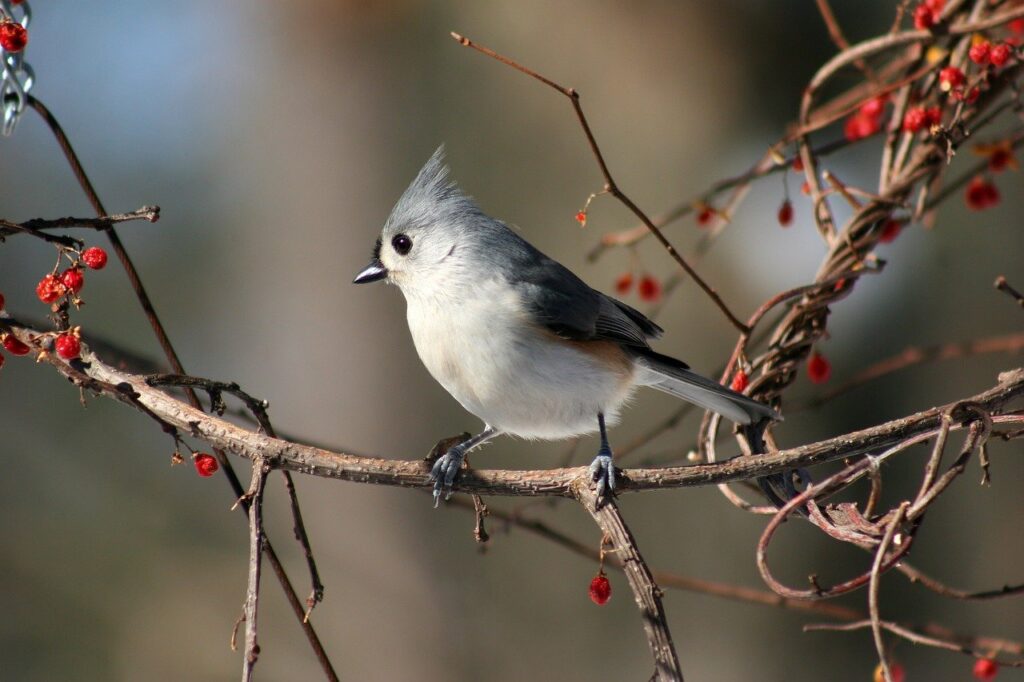
Frequently Asked Questions About Cedar and Bohemian Waxwing Bird Habitats
Do waxwings come to feeders?
Waxwings will sometimes visit feeders, but they’re more likely to feed on berry-producing shrubs. To entice waxwings to bird feeders, use tray or platform feeders filled with dry or fresh fruit.
Where do waxwings nest?
Waxwings generally nest in trees and they’re less likely to use nesting boxes than many other birds. Some of the trees waxwings like nesting in include native evergreens, maples and hawthorn.
When do waxwings migrate?
Waxwings may hang out in the northern United States year round, but some will also migrate south into the Southern United States and Central America in winter.
How do you tell the difference between a cedar waxwing female and male?
Male and female waxwings look very similar; however, male waxwings typically have a darker area under their chins.
Are their birds that look like cedar waxwing birds?
Aside from Bohemian waxwings, there are a few other birds that bear some resemblance to cedar waxwings. Cardinals have a similar shape to waxwings and they also sport a head crest, although male cardinals are red and female cardinals don’t have a black eye mask. Tufted titmice also look a bit like waxwings, but they’re smaller in size and don’t have a dark eye mask either.
